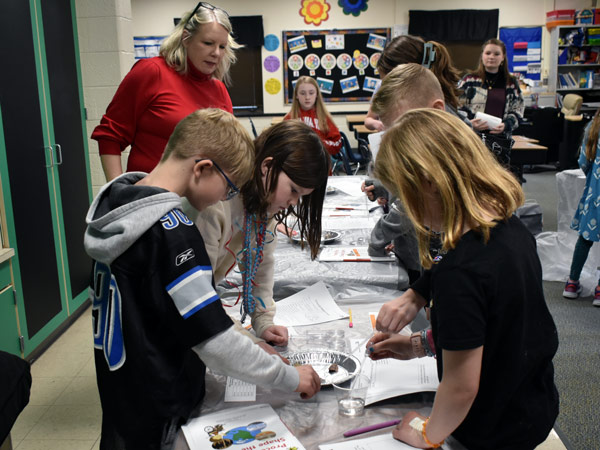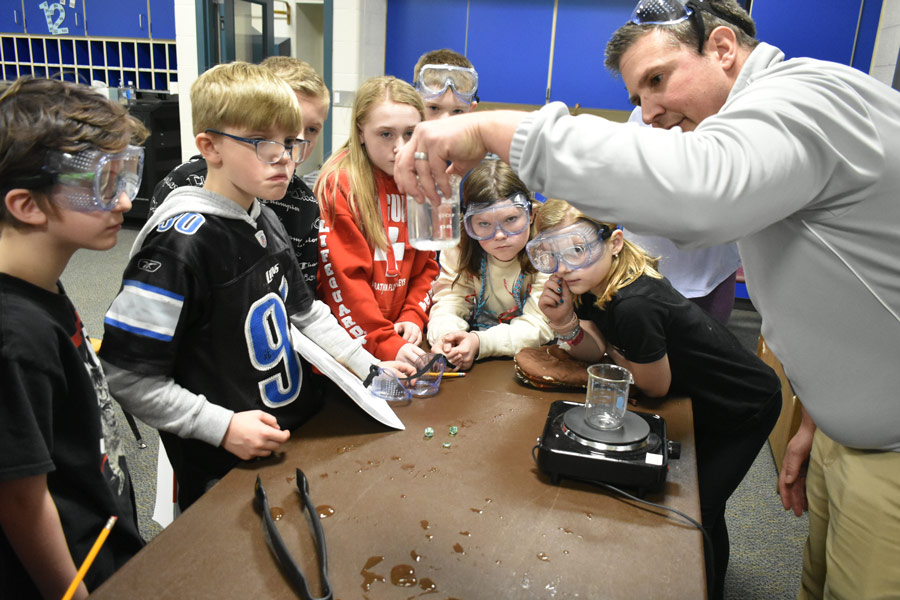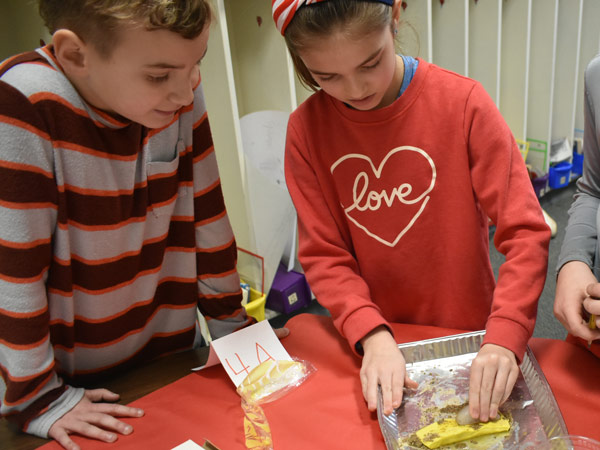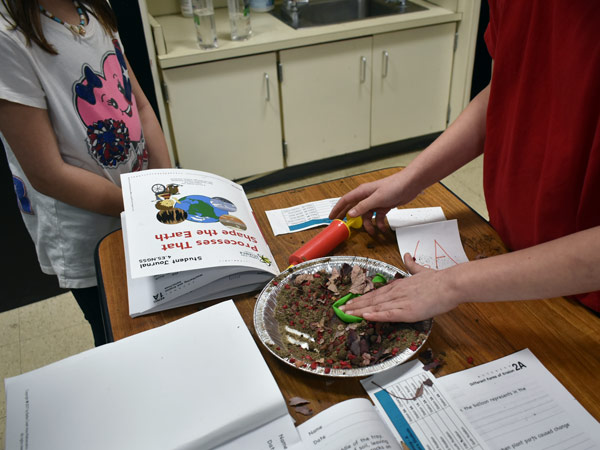Caledonia — Principal Brent Huck asked a room of fourth-graders, seated in a semi circle facing the science experiment in front of him, about what happens to molecules when they are heated.
“Who has a hypothesis?” he asked.
Students raised their hands and offered ideas, piecing together the answer: as molecules are heated, energy increases and changes from solid to liquid to gas. “Temperature works as a kind of erosion when rocks in the desert break apart over time from being heated during the day and cooled at night,” Huck explained.
Then the experiment began. Huck heated a glass marble in a beaker on a hot plate for a few minutes, before using tongs to transfer the marble into a second beaker filled with ice water. It hissed and cracked before sinking to the bottom.
Exploring Erosion
Huck’s experiment was one of six during a recent science lesson at Caledonia Elementary, all simulating different kinds of erosion. Fourth-grade teacher Kim Blovits created the series of hands-on labs across four classrooms for groups of fourth-graders to rotate between.
“It’s cool for them to travel between different teachers’ rooms and when they’re finished with all the experiments, we regroup in our own classes and talk about what they saw,” she said. “Some will have seen different things in each experiment.
Blovits said it took several days of preparation for herself and other fourth-grade teachers, Alissa Chase and Keith Thompson. Each station’s experiment focused on an erosion process that shapes the earth, including wind, water, ice, heat, chemicals and vegetation.
In Blovits’ classroom, half the students poured vinegar on rocks and recorded their observations, while the other half noted the effects of pouring water on sand.
In Thompson’s room, fourth-graders Branson, Hailey, Liam and Harlow simulated glacier erosion and made hypotheses about what would happen when ice came in contact with sand covered clay.
Branson said he thought the sand would slide off the clay.
“I think the ice will melt into the clay or stick to the ice,” Hailey added.
On the other side of the classroom, Thompson used a small air pump to inflate a balloon under a pile of dirt and leaves, mimicking vegetation erosion.
“Having hands-on rotating stations with different experiments allows students to manipulate variables,” Huck said. “It’s a really fun way to experience science and connect it with the real world.”

Read more from Caledonia:
• She has a love for growing plants, students and staff
• Book appétit













